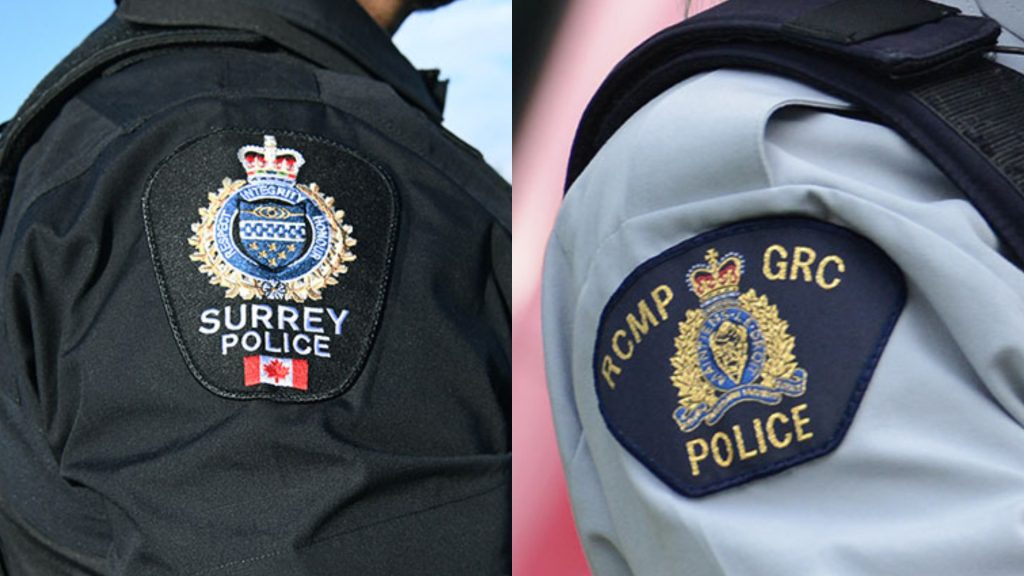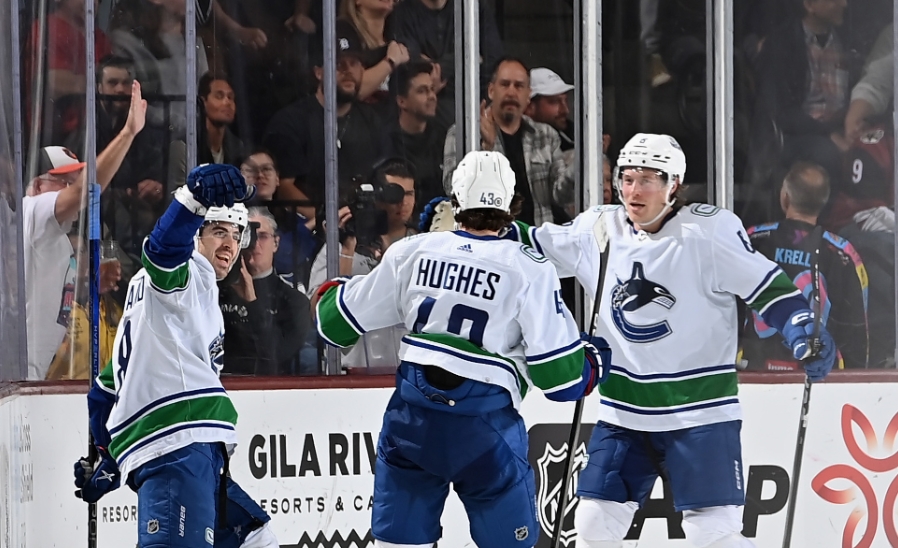Same old song and dance: Do musicians ever get tired of their own hit tunes?
Posted May 28, 2012 3:02 pm.
This article is more than 5 years old.
TORONTO – New York indie-pop outfit Fun set the world on fire with the No. 1 single “We Are Young.” But months after it topped the charts, no one would blame the trio if the tune had them feeling a little burnt out.
After all, even those among us who celebrated the song’s ceaselessly contagious chorus (“set the world on FI-YA!” is a hook hefty enough to reel in a white whale) might have tired of the track once it achieved supermarket-stereo ubiquity.
So how would you feel if you performed the song every single day?
For their part, however, the members of Fun say they’re still having a ball each and every time they take the stage to perform their signature hit.
“That’d be really dumb on our part to get tired of it,” frontman Nate Ruess said during a recent interview in Toronto.
“Watching the way people react (when we play it) makes it hard to get tired of it,” added guitarist Jack Antonoff. “Not to sound like a total cheesebag, but when you see people get excited and go, ‘Oh my God, this is the song that I’ve been singing for a long time’ — it’s cool, because we were those people at one point.”
But of course, they are young.
While they’ll rarely admit it publicly, many artists reluctantly concede that over time, performing their biggest hits night in, night out can wind up feeling like a chore. And the reasons for that weariness are numerous.
Sometimes, the sentiment of a song written years — or even decades — before will no longer resonate, or a band will simply change its mind about the value of a tune. The setlist resource website setlist.fm, for example, tracks 510 instances of R.E.M. performing “The One I Love” between 1986 and 2008, compared with only one recorded occasion on which they saw fit to perform “Shiny Happy People,” a chart hit that was poorly regarded by critics and even bashed by Michael Stipe himself.
In other cases, a band will feel it’s outgrown the stylistic hallmarks of a major hit written in the fledgling stage of its career — consider Radiohead, the British rock innovators who almost never tackle their breakout blast of jagged angst, “Creep,” in front of an audience anymore.
And sometimes, of course, artists just get plain tired of playing a song. “1234” represents Toronto-based songstress Leslie Feist’s biggest hit to date, but you could count on one hand the number of times she performed the jaunty tune on her most recent tour.
It becomes especially hard when a song endures over decades — how many times, for instance, has Sting pleaded in falsetto to turn on that red light?
“I’ve sang ‘Zombie’ so many times that I actually feel like a zombie,” Cranberries singer Dolores O’Riordan has joked, referencing the band’s impossible-to-kill 1994 single.
“We’ve been doing our old hits for so long, you feel like you’re stuck in a loop or something, so with new material you feel very much alive.”
The catch-22, of course, is that the vast majority of audience members at a given show are most primed to hear those trademark tunes — sometimes, those songs are the only ones familiar to casual fans enticed into buying a ticket by fond memories of a major radio hit. And artists stubbornly refusing to give the crowd what they want can sound a bum note.
As a result, it doesn’t take long for some artists to grow to resent the very songs on which they’ve established their careers.
“It does have to do with the expectation that (your hits) are going to be in a show, and that people are buying their tickets expecting to have those songs included,” said Ottawa-reared singer/songwriter Bruce Cockburn in a recent telephone interview.
“And if you don’t include them, there’s dissatisfaction, so there’s pressure around it. And that’s what creates the distaste for (playing the hits).”
It’s probably not hard to guess which songs Cockburn has intermittently soured on. There were times when he probably would have liked to blow up his 1984 tune, “If I Had a Rocket Launcher,” but it was actually 1979’s “Wondering Where the Lions Are” — still the biggest hit he ever had in the U.S. — that really made him snarl.
“I got to really hate that song after a while,” he said. “And then I just let it lie for … a period of years where I really didn’t perform it, or hardly ever did, and it came back. And I enjoy it now again.”
Indeed, that’s the most common cure for hit fatigue — spending some time apart.
Blue Rodeo’s Jim Cuddy grew understandably tired of performing the Toronto band’s 1987 breakthrough “Try” — its refrain, “oh night after night/ Oh it’s crazy,” took on different meaning after reaching for those high notes on every show on every tour.
“I got sick of that song so bad for a while. After about five years, I went: ‘Oh my God,'” Cuddy said with a laugh during a recent interview.
So, he and “Try” went on a break.
“And now? I love it. It’s fun. It forces you go to the top of your range, the bottom of your range. It’s simple. So now I don’t think I’ll ever be fatigued with that song.”
Former Barenaked Ladies singer Steven Page said his old band similarly rested early hits “Brian Wilson” and “If I Had $1,000,000” for tours at a time — but it was a necessary step to ensuring the band’s performances remained sharp.
“We knew that if we weren’t feeling it at all, that it would feel like we were sleep-walking through it,” Page said. “The audience deserved better than that.”
Our Lady Peace frontman Raine Maida says his band actually eliminated some songs from their live performances entirely. But luckily, few of those banished tunes are fan favourites that crowds clamour to hear.
“There’s some songs we’ll just never play — they just don’t resonate with us anymore and they don’t mean anything really to me,” said Our Lady Peace frontman Raine Maida recently.
“But fortunately, a lot of the main things that people want to hear that we usually put in the set every night, yeah, they still really have a lot of value to me.
“It’s weird. I couldn’t imagine a set where we don’t play ‘Naveed.'”
There are other tricks for freshening up a stale song. Bob Dylan is famous for re-inventing his classics in a live setting, a common strategy for industrious songwriters. And then there’s always that other standby for artists who can’t stomach one of their own tunes but still want to give the audience a taste: the medley.
That was the strategy adopted by genre-hopping Minneapolis pop legend Prince during a recent three-hour marathon at Toronto’s Air Canada Centre, when he combined truncated versions of hits including “Nothing Compares 2 U,” “1999” and “Little Red Corvette” into crowd-pleasing mega-mixes.
But such solutions still won’t please everybody.
“No medleys please!” laughed Odds frontman Craig Northey, who said he was “thankful” for hits including “Someone Who’s Cool” and didn’t tire of them.
“Sometimes I think it’s a little precious to not (play your hits). And that you should — at least — ghettoize them and put them in the encore, or find some way. But … the only people who are allowed to do medleys that are cool are Motown artists in their sunset years.”
Indeed, many music fans are angry at the notion of highly paid musicians refusing to play the songs they’re known for.
For a fan forking out hundreds of dollars for a prime seat, parking and concessions for what could be a once-in-a-lifetime opportunity to see a favourite artist, is it too much to ask for said artist to endure a few minutes of boredom to send thousands home happy?
“I just think it’s selfish to not play those songs that your career was built on, that people supported you through,” Canadian songwriter Jann Arden has said.
“If that’s what some of these younger acts want to do, let them go cut their own throats. I think it’s inexperience, I think it’s selfish, self-serving, narcissistic and stupid.”
Added Page: “I always get annoyed when I see that an artist who I think thinks they’re better than their past material…. We were never ashamed of our stuff.”
If there was ever a group with a rightful claim on banishing a major hit to the past, it might be the former tweenybop sibling outfit Hanson.
“MMMBop” went to No. 1 in 12 countries in 1997. The video featured the pubescent trio frolicking in oversized clothes over terrible greenscreen. The song was as ubiquitous in the ’90s as flannel, Pogs and slap bracelets, so insidiously infectious that McAfee might have made a fortune scrubbing the tune from its unwitting victims’ brains.
And yet, the Oklahoma trio still doggedly performs “MMMBop” on nearly every tour stop — impossibly high notes be damned.
In part, they want to satisfy their fans. But more than that, the trio is deeply proud that a song they wrote 15 years ago still resonates.
“It’s a little bit like a runner not wanting to wear their gold medals,” said singer Taylor Hanson during a recent interview in Toronto. “For us, we wear the gold medals with pride because we don’t see them as something that is relegated to the past.
“We’re proud of where we came from,” he added. “It’s understandable that some artists want to put (their old hits) away…. (But) what you’re saying to the fans is: you’re not a part of our history anymore.
“When you get out on stage, you need to remember that you were a fan first…. You’ve gotta remember that moment when you go onstage, and not steal it away from your fans. So that means playing old songs, new songs, and doing everything with a level of conviction and passion that will inspire that 12-year-old kid in the audience or that 30-year-old or whatever to go: ‘Damn. I love this song. I love this band.'”
___
With files from Canadian Press reporters Victoria Ahearn, Andrea Baillie and Michael Oliveira in Toronto.










